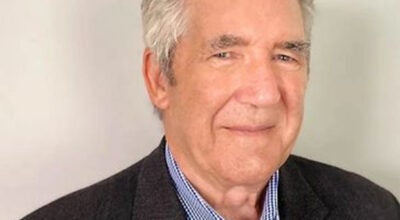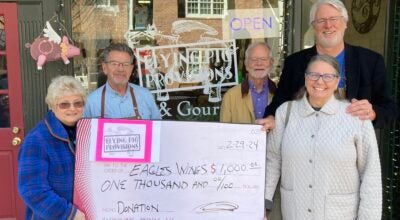Starving artists? Beaufort County art scene thriving
Published 9:42 pm Wednesday, March 27, 2013

Whiting Toler’s favorite subjects to paint involve Washington history. Unfortunately, it is his commercial work that pays his bills. (MONA MOORE | Daily News)
Soon after Whiting Toler retired as a high school and junior high school art teacher, his phone started ringing with offers of local freelance work. And it never stopped.
Despite living in a small town in the 1960s, he never was what one would call a “starving artist.”
“I make a living as an artist just because I really don’t know how to do anything else. I was an artist around here when there were no other artists around,” he said.
There was a demand for commercial art. Toler freelanced for local businesses like the Aurora Fossil Museum and PotashCorp-Aurora (before it was renamed PotashCorp-Aurora about two years ago).
“One of the keys to the things I did, if they wanted photography, I would do photography,” Toler said. “If they wanted sketching, I would do that. … If they wanted a frickin sign for the parking lot I would do that.”
Toler was the man behind restaurant signs like Castaway’s on River Road and the old Swamp Dogs. He designed tons of restaurant menus,booths for boat shows and business signs.
“Those parking-lot signs carried my bills at the end of the month,” he said.
The connections he made in Beaufort County led to freelance assignments in San Francisco and Florida.
Toler said that artists these days are not handed a career like his, but there are opportunities out there. He recommends artists accept any work that allows them to do art, whether it is commercial or fine art.
He said the biggest opportunities are online. An artist can be based almost anywhere and have a global presence.
“Once you’re online, the world is right next door,” he said.
Toler was the first director of the Beaufort County Arts Council. He and BCAC members used to dream of the day galleries would line Main Street.
“The fact that Washington has become a bit of an art community is something I’m very proud of,” he said. “Inner Banks (Artisans’ Center) is as good as you’re going to find in North Carolina, and River Walk is a wonderful place.”
Artist Jayne Wall said the economy has been a major factor in the success of River Walk and local artists, most of whom could not count on their artwork to support them.
“This place has been here over 15 years now, and we’re still hanging on by our fingernails,” she said of the gallery.
But it isn’t all bad news. Wall said many local artists supplement their incomes with teaching. Many of the artists have, like Toler, started their careers after retiring. They collect pensions and use art as an outlet, not a career.
With local art walks and festivals, artists have been able to eek out some profits.
“When I was a little girl back in the dark ages, nobody had original art unless they were paintings that were handed down or charcoals of their children,” Wall said. “Now, people do buy original art.”
When Judy Jennette was director of the arts council, the economy supported local artists.
“Fifteen years ago, I would’ve said, ‘Yes, it’s very possible to make a living as an artist.’ It’s definitely a different scene now,” Jennette said.
15 years ago I would’ve said, ‘Yes, it’s very possible.’”
Joey Toler, BCAC executive director of the, said Beaufort County still has a thriving art scene, especially for the size of its population.
“And we have some thriving artists,” he added. “But the reality is there are a lot of artists who are not living off their art,” he said.
He said the artists who are thriving have a few things in common. They really understand the value of social media and promoting themselves that way, he said. He recommends every artist create a Facebook account for his or her art and treat it as a way to market their work.
“They should put something out there every day and they should encourage friends to share it,” Joey Toler said.
There is something Beaufort County residents can do as well, he noted.
“Just keep visiting our galleries and our gift shops,” Joey Toler said. “Just keep up what we’re doing. I think, for a community this size, we really do a good job of supporting our artists.”




